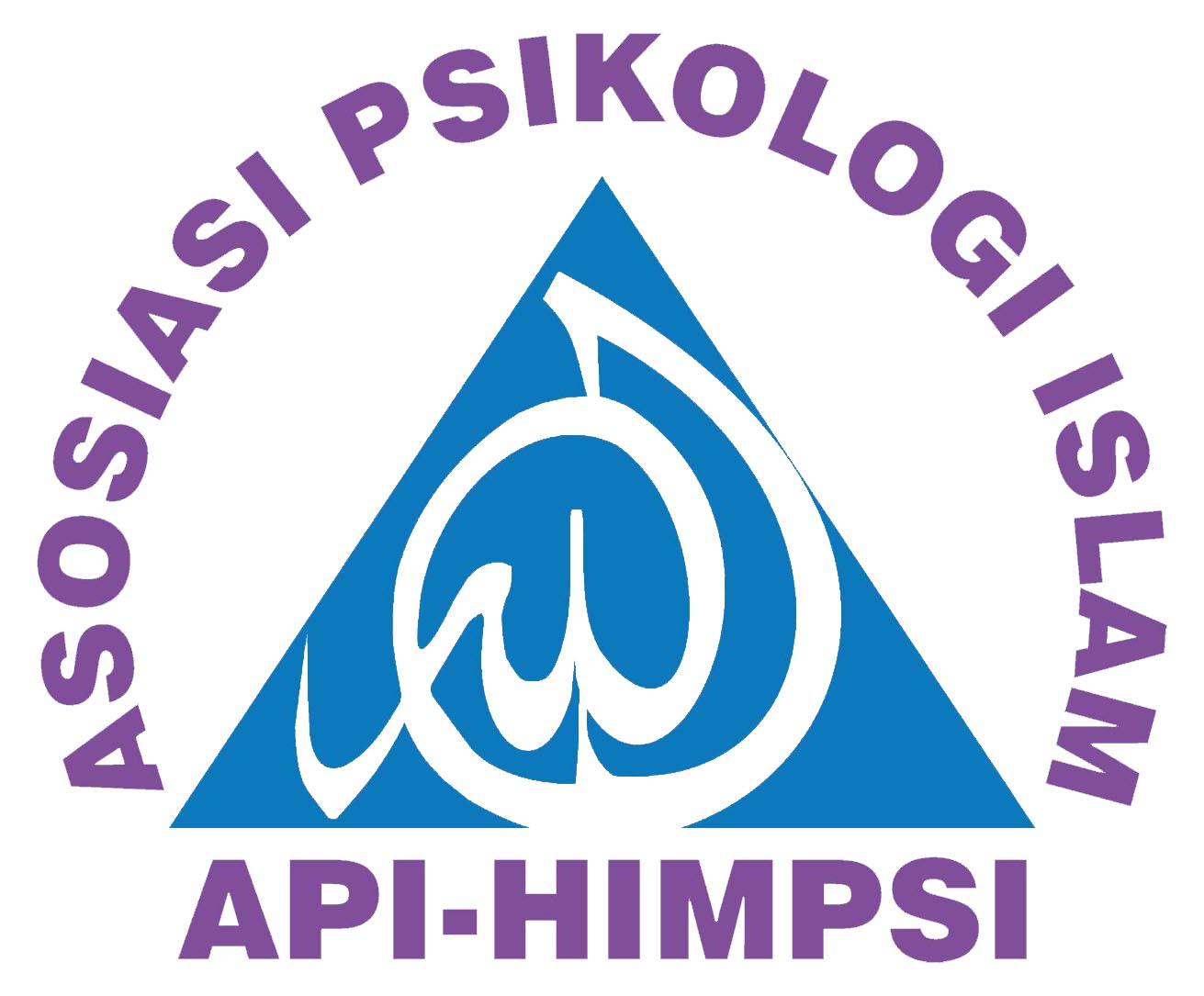Modifikasi Alat Ukur Interpersonal Reactivity Index (IRI) pada Subjek dengan Identitas Sunda
DOI:
https://doi.org/10.15575/jpib.v4i1.9376Keywords:
Perspective taking, Concern for other, EmpathyAbstract
References
Afifah, S. N., & Moeis, S. (2017). Kehidupan masyarakat adat kampung Banceuy: Kebertahanan adat istiadat menghadapi perubahan sosial-budaya (kajian historis tahun 1965-2008). Factum. 6(1). 96-114. https://doi.org/10.17509/factum.v6i1.10181
Amiruddin, A., Fueggle, S. N., Nguyen, A. T., Gignac, G. E., Cluniesâ€Ross, K. L., & Fox, A. M. (2017). Error monitoring and empathy: Explorations within a neurophysiological context. Society for Psychophysiological Research. 54(6). 864-873. https://doi.org/10.1111/psyp.12846
Bajouk, O., & Hansenne, M. (2018). Dispositional perspective-taking and empathic concern modulate the impact of cognitive load on empathy for facial emotions. Psychological Reports, 122(11), 2201-2219. DOI: 10.1177/0033294118799337
Batson, C. D. (2011). Altruism in humans. Oxford University Press.
Chopik, W. J., O’Brien, E., & Konrath, S. H. (2017). Differences in empathic concern and perspective taking across 63 countries. Journal of Cross-Cultural Psychology, 48(1). 23-38. https://doi.org/10.1177/0022022116673910
Corte, K. D., Buysse, A., Verhofstadt, L. L., Roeyers, H., Ponnet, K., & Davis, M. H. (2007). Empathic tendencies: Reliability and validity of the dutch version of the interpersonal reactivity index. Psychologica Belgica, 47(4). 235-260. https://doi.org./10.5334/pb-47-4-235
Cuff, B. M. P., Brown, S. J., Taylor, L., & Howat, D. (2016) Empathy: A review of the concept. Emotion Review, 8(2), 144-153. https://doi.org./10.1177/1754073914558466
Davis, M. H. (1980). A multidimensional approach to individual differences in empathy. JSAS Catalog of Selected Documents in Psychology, 10. 85.
Fernandez, A. M., Dufey, M., & Kramp, U. (2011). Testing the psychometric properties of the interpersonal reactivity index (IRI) in Chile. European Journal of Psychological Assessment, 27(3), 179-185. https://doi.org/10.1027/1015-5759/a000065
Friedenberg, L. (1995). Psychological testing: Design, analysis, and use 1st edition. Allyn & Bacon.
Girolamo, M. D., Giromini, L., Winters, C. L., & Serie, C. M. B. (2017). The questionnaire of cognitive and affective empathy: A comparison between paper-and-pencil versus online formats in Italian samples. Journal of Personality Assessment, 101(2). 159-170. https://doi.org/10.1080/00223891.2017.1389745
Gustini, N. (2017) Empati kultural pada mahasiswa. JOMSIGN: Journal of Multicultural Studies in Guidance and Counseling, 1(1), 17-35. https://doi.org/10.17509/jomsign.v1i1.6049
Hidayat, D., & Hafiar, H. (2019) Nilai-nilai budaya soméah pada perilaku komunikasi masyarakat suku sunda. Jurnal Kajian Komunikasi, 7(1). 84-96. https://doi.org/10.24198/jkk.v7i1.19595
Jaenudin, U., & Tahrir. (2019). Studi religiusitas, budaya sunda, dan perilaku moral pada masyarakat kabupaten Bandung. JPIB: Jurnal Psikologi Islam dan Budaya, 2(1), 1-8. https://doi.org/10.15575/jpib.v2i1.3445
Lishner, A. D., Stocks, E. L., & Steinert, S. W. (2017) Empathy. Dalam Encyclopedia of personality and individual differences (Hal.1-8). Springer International Publishing. https://doi.org/10.1007/978-3-319-28099-8_513-1
Masroer, C. J. (2015). Spiritualitas Islam dalam budaya wayang kulit masyarakat Jawa dan Sunda. Jurnal Ilmiah Agama dan Perubahan Sosial, 9(1) 38-61. https://doi.org/10.14421/jsa.2015.091-03
Miguel, F. K., Hashimoto, E. S., Gonsalves, E. R. D. S., de Oliveira, G. T., & Wiltenburg, T. D. (2018). Validity studies of the online empathy questionnaire. Trends Psychol., Ribeirão Preto, 26(4), 2217-2230. https://doi.org./10.9788/TP2018.4-18En
Niedtfeld, I. (2017). Experimental investigation of cognitive and affective empathy in borderline personality disorder: Effects of ambiguity in multimodal social information processing. Psychiatry Research, 253, 58-63. https://doi.org/10.1016/j.psychres.2017.03.037
Norman, R. M., & Sjetne, I. S. (2019). Adaptation, modification, and psychometric assessment of a Norwegian version of the Basel extent of rationing of nursing care for nursing homes instrument (BERNCA-NH). BMC Health Services Research, 19, 969. https://doi.org/10.1186/s12913-019-4817-3
Permadi, H. S., Justitia, D., & Marjo, H. K. (2016). Profil empati mahasiswa Sunda. Jurnal Insight, 4(1), 1-7. https://doi.org/10.21009/INSIGHT.041.06
Powell, P. A., & Roberts, J. (2017). Situational determinants of cognitive, affective, and compassionate empathy in naturalistic digital interactions. Computers in Human Behavior, 68. 137-148. https://doi.org/10.1016/j.chb.2016.11.024
Rahman, A. A., Sarbini, Tarsono, Fitriah, E. A., & Mulyana, A. (2018). Studi eksploratif mengenai karakteristik dan faktor pembentuk identitas etnik Sunda. JPIB: Jurnal Psikologi Islam dan Budaya, 1(1). 1-8. https://doi.org/10.15575/jpib.v1i1.2072
Reniers, R., Corcoran, R., Drake, R. J., Shryane, N., & Vollm, B. (2011). The QCAE: A questionnaire of cognitive and affective empathy. Journal of Personality Assessment, 93(1), 84-95. http://doi.org/ 10.1080/00223891.2010.528484
Riess, H. (2017). The science of empathy. Journal of Patient Experience, 4(2), 74-77. https://doi.org/10.1177/2374373517699267
Salsabila, D. F., Rofifah, R., Natanael, Y., & Ramdani, Z. (2019). Uji validitas konstruk indonesian-psychological measurement of islamic religiousness (I-PMIR). JPIB: Jurnal Psikologi Islam dan Budaya, 2(2), 1-10. https://doi.org/10.15575/jpib.v2i2.5494
Samovar, L. A., Porter, R. E., & McDaniel, E. R. (2010). Komunikasi lintas budaya. Salemba Humanika.
Sukmayadi, T. (2016). Kajian tentang karakter berbasis nilai-nilai kearifan lokal pada masyarakat adat kampung Kuta kecamatan Tambaksari kabupaten Ciamis. Jurnal Civics, 13(1), 96-112. https://doi.org/10.21831/civics.v13i1.11079
Thamrin, H. (2018). Punten, mangga, nuhun†Makna nilai luhur karakter moral Sunda yang harus dipertahankan. Linguart, 6(2).
Wallentin, F. Y., Jöreskog, K. G., & Luo, H. (2010). Confirmatory factor analysis of ordinal variables with misspecified models. Structural Equation Modeling: A Multidisciplinary Journal, 17(3), 392-423. https://doi.org/10.1080/10705511.2010.489003
Wang, Y., Li, Y., Xiao, W., Fu, Y., & Jie, J. (2020). Investigation on the rationality of the extant ways of scoring the interpersonal reactivity index based on confirmatory factor analysis. Frontiers in Psychology: Quantitative Psychology and Measurement, 11, 1086. https://doi.org/10.3389/fpsyg.2020.01086
Warsihna, J., Ramdani, Z., & Tae, L. F. (2021). The measurement of science teaching efficacy belief instrument (STEBI): Sustaining teacher’s quality. Psychology and Education, 58(3), 2972–2979. https://doi.org/10.17762/pae.v58i3.4380
Downloads
Additional Files
Published
Issue
Section
Citation Check
License
Authors who publish with this journal agree to the following terms:
- Authors retain copyright and grant the journal right of first publication with the work simultaneously licensed under a Creative Commons Attribution License that allows others to share the work with an acknowledgment of the work's authorship and initial publication in this journal.
- Authors are able to enter into separate, additional contractual arrangements for the non-exclusive distribution of the journal's published version of the work (e.g., post it to an institutional repository or publish it in a book), with an acknowledgment of its initial publication in this journal.
- Authors are permitted and encouraged to post their work online (e.g., in institutional repositories or on their website) prior to and during the submission process, as it can lead to productive exchanges, as well as earlier and greater citation of published work (See The Effect of Open Access).






